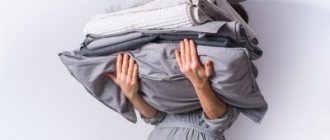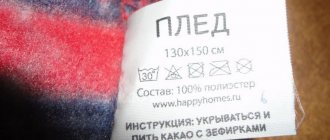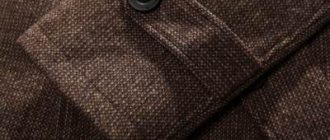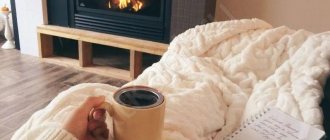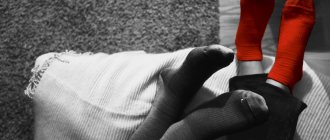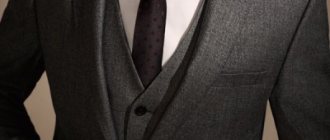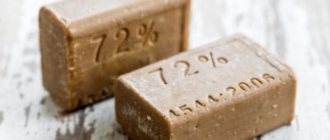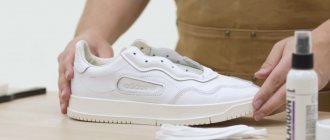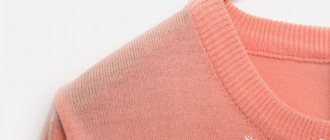General recommendations
- Wash white and light-colored items separately from colored items.
- Do not mix linen with other fabrics in the washing machine drum.
- Follow the washing and ironing instructions on the product label.
- For linen, hand washing is preferable. Although machine washing with the “delicate” or “manual” mode will not damage the fabric.
- It is better to use powder in capsules or liquid form, since the structure of the fabric can be damaged by the grains remaining in it. Granulated can be pre-dissolved in a glass of warm water and added directly during washing.
- Test products used to remove stains on an inconspicuous place: an internal seam or pocket, or the back of a collar.
- The permissible water temperature when washing undyed linen is up to 50˚C, for dyed linen – 30-40˚C.
- Fabric softeners added during rinsing soften linen fabric.
- Do not use chlorine-containing detergents.
- Soak linen items for no longer than an hour.
Properties of flax
Linen is valued for its excellent hygienic properties, strength, naturalness and environmental friendliness, hypoallergenicity, ability to kill bacteria and regulate temperature. Clothing made from linen is very comfortable: it quickly absorbs excess moisture and dries, allows the body to breathe, and does not become electrified.
It is thanks to all these advantages that flax is used for the production of men's, women's and children's clothing, bedding, and home textiles.
But there are also disadvantages - 100% natural fabric can wrinkle, stretch, fade and shrink when washed.
Read about: how to wash tulle so that it is white.
Nowadays linen fabrics undergo special processing, which adds elasticity to the fibers and allows the product not to wrinkle. For the same purpose, synthetic fibers are added to the fabric during production. The likelihood of finished products shrinking is very low, since before production the material is usually specially washed and dried, after which it does not shrink again. Therefore, it is important to choose quality items.
On a note
And yet, even such durable fabric can deteriorate, lose its attractiveness and some positive qualities. Aggressive detergents, chlorine bleaches, rubbing and twisting are all things to avoid.
Handwash
- Pour such a volume of water into the basin so that the linen item is completely immersed in it.
- Add powder. Mix it well in water and only then immerse the product in it.
- Wash as usual. Rub visible dirt more thoroughly with your hands.
- Rinse in water at room temperature, changing it 2-3 times.
- After pulling out the product, run your hands from top to bottom so that the water drains faster. When squeezing, try not to twist or squeeze too much, as the resulting creases are then difficult to smooth out. It's better to let the water drain on its own.
Nuances
Linen is prone to color loss and shrinkage. Removing stains can damage the fabric. Let's talk about possible risks.
Coloring
If you wash linen clothes incorrectly, they may become stained. Therefore, the use of powders with colored granules is not recommended. Hand washing requires more water to allow clothes to float freely. Lack of water can lead to shedding. When rinsing, be sure to wash the item until the foam is washed off.
Recommendation! In order not to lose the rich shade of the fabric, when rinsing, add 1 glass of vinegar to the water, and no Lenor will be needed.
Shrinkage
Let's figure out how to wash linen so that it doesn't shrink. If the material does not contain synthetic additives, this leads to shrinkage. But after the first wear, the item will return to its original appearance. To make the item recover faster, try gently ironing it through a piece of gauze.
This is interesting: Water-repellent impregnation for clothing: with membrane, composition, types
Machine washable
- Set the “Delicate Fabrics” or “Hand Wash” mode.
- Set the temperature to no higher than 40˚C.
- Use "Extra Rinse". Linen needs to be rinsed well. Remaining detergent particles destroy the fabric structure.
- Do not load the drum to the top. Linen absorbs a lot of water, and the wash will turn out to be of poor quality. The optimal loading volume is 2/3 of the drum.
- Reduce spin speed to minimum. After a gentle spin, the product is easier to iron.
How to wash better
Gentle hand washing is preferred. Even if there is a symbol on the manufacturer's label that allows you to machine wash it, you are confident in the high quality of the fabric or you do not have time to wash it, wash the item by hand for the first time. If you do not notice any shrinkage and the product retains its brightness and no streaks or stains appear on it, then you can then use the washing machine.
However, you need to take into account that linen fabrics vary in thickness, density, and thread structure (they can be knitted from short or long fibers).
Shrinkage after washing
Pure linen tends to shrink after washing. The previous size returns immediately after the first wear.
If there is severe shrinkage, linen items should be washed again or moistened generously with water and ironed while they are still damp with a hot iron. Move the iron along the fabric from the middle to the edges as if trying to stretch it. Or iron through damp gauze folded in several layers.
If the item has worn out a lot during wear or you made a mistake when choosing the size, you can shrink it by washing it at a temperature above 60˚C.
Drying and ironing
In order for the products to retain their original shape, it is necessary to ensure proper drying so that the linen does not spoil during ironing. Use our tips:
- Do not twist or squeeze.
- The drying room must be well ventilated. Avoid direct sunlight on brightly colored fabric.
- Don't wait until things are completely dry - iron them while still wet.
- An iron with a humidifier is the best option for ironing. If this is not the case, use a spray bottle.
- Spread the clothes on a table or windowsill and leave to dry.
Now you know how to wash linen in a machine and by hand. Follow the washing rules, and linen will not shrink or stain even in the washing machine.
Features of caring for linen fabric with embroidery
When washing
- It's better to wash by hand. Just don't rub it with your hands. Gently rub any visible dirt on the embroidery with a soft-bristled brush. Machine wash is also suitable. You need to set the “delicate mode” and cancel the spin cycle. Place the embroidered item in the drum in a special bag or an ordinary pillowcase made of non-fading material.
- Do not use powder with a bleaching effect or bleach under any circumstances, as the colored threads of the design will lose their color.
- Use powder for delicate fabrics or in liquid form.
- After washing, rinse the item well. When using manual water, change the water 2-3 times; when using machine water, select the “extra rinse” mode.
- During washing, embroidery threads can sometimes stain the area around them. On white items this can be eliminated with bleach. Wrap some cotton wool around a match or toothpick, soak it in bleach and wipe the painted areas without touching the embroidery. Afterwards wash the product well.
- During the last rinse, you can add vinegar (a tablespoon per liter of water). This will preserve and strengthen the color of the embroidery.
- You cannot wring out an item by twisting it. Run your hands over it from top to bottom. This way most of the water will come off. Wrap it in a non-fading terry towel and pat dry. Then place the item between two dry towels and iron it. Or hang it on a line or dryer, wait for the laundry to dry, and start ironing. The item must be damp.
When ironing
- The area with embroidery should be ironed from the wrong side. Place a soft cloth under it in advance. Then it will not be flattened by the iron and will retain its texture.
- The tightened fabric around the embroidery can be straightened by steaming.
- If there are still bruises on the product around the embroidery, you need to put something heavy with a flat surface on them while they are still warm after ironing, for example, dictionaries, a stack of notebooks. Just first lay non-colored polyethylene under them so that the paint from the covers of books or notebooks does not stain the fabric. Press until completely dry.
- Small spaces of fabric between small embroidery details can be smoothed with steam. Use a steam generator or an iron with a vertical steam function.
- After ironing, do not immediately put things away in the closet. They need another 20-30 minutes to dry.
Choosing a method for washing linen
If you have a question about whether linen can be washed in a machine, then it’s worth saying: hand washing this material is preferable. But if your SMA has a delicate wash program, then you can remove dirt by machine.
Choosing a detergent
The main advantage of linen is that it becomes better and more pleasant to the touch with each subsequent wash. If you do not want to ruin your clothes, it is recommended to choose the right detergents. The use of chlorine powders is prohibited, otherwise the fabric fibers will become thinner, and a loss of strength and attractiveness is guaranteed. Therefore, when purchasing, study the composition of the powder. Wash white items with regular powder, colored items - accordingly, for colored items. This way you will be able to preserve the brightness and color saturation of the fabric for a long time. To soften, be sure to rinse your laundry by adding fabric softener to the container.
Recommendation! Use oxygen bleach when washing overly soiled whites. When washing colored items or clothes with embroidery, sequins and rhinestones, do not use bleach.
How to remove stains from linen items
Sometimes stains appear on clothes that need to be removed before the main wash, using household chemicals or traditional methods.
Household chemicals
Laundry soap (72%) or “Antipyatin”
They cope with stains of various origins. Before washing, wet the soiled area, lather with soap and soak. After 10-20 minutes, wash by hand or by machine.
Powder + cold water
Blood stains can be easily removed if the stain is washed under cold running water. Rub a pinch of powder into the remaining pale red mark with your hands, put it in a bowl of cold water and leave for an hour. The time depends on how old the stain is. Then wash off the stain under running cold water and wash as usual.
Stain remover and bleach
They are suitable for light or undyed linen. The instructions for their use should indicate that they are suitable for linen fabric. Oxygen bleach cleans fabric without damaging its fibers.
Apply stain remover to stains that have been previously moistened with water. After some time, wash the item as usual. Add bleach to the washing water. Soak for 20-30 minutes and wash as always.
The dosage of these compositions is according to the instructions for use from the manufacturer.
Selecting a detergent
- Unpainted items can be washed with regular chlorine-free powder or laundry soap. Chlorine can damage the fiber structure and turn a durable and wear-resistant item into a brittle one.
- On undyed fabrics, non-chlorine bleaches, such as oxygen bleaches, can be used. They have a gentle effect on the fibers without destroying their structure.
- You can also add water softeners, balms, and fabric softeners.
Useful
It is better to wash colored items made of linen fabric with special liquid detergents, powder for washing colored and children's underwear. Thin and loose fabrics can only be washed by hand in warm water.
First contact of new clothes with water
Particular attention should be paid to the first wash of a linen item, since it is this treatment that can cause the most severe shrinkage.
Please note the following information:
- preference is given to hand washing, as it is more gentle;
- if the fabric is colored, then it is pre-soaked in a weak vinegar solution (1 tbsp per 1 liter of water);
- after 15-30 minutes, the item is rinsed and sent to dry - this allows the dye to be fixed in the material;
- if the item has not been worn or used, then there is no need to add washing powder;
- To make the fabric softer, you can use fabric softener.
When it was decided to use a washing machine for the first wash of a new item, they turn on the gentle mode. Features of manual settings: water – up to 40 degrees, spin disabled.
Removing heavy soiling
Enzymatic stain removers, the description of which allows the use of natural fabrics for washing, will help to clean heavily soiled areas from colored and undyed laundry.
Before applying detergent to your clothes, make sure that the laundry is not fading. To do this, perform the following manipulations:
- Apply a few drops of stain remover to the back of your clothing.
- Wait about 5 minutes.
- Rinse clothes under running water.
- Make sure the fabric is not faded or the pigment is damaged.
If the dye remains on the surface, the product will not damage the clothing and will remove the necessary stains.
Possible stains on linen fabric
Removing stains
You cannot wash linen in hot water, otherwise the product will shrink greatly and be damaged. Therefore, if a stain has been planted, you should use the following advice: soap the contaminated area with laundry soap, then soak in the powder for an hour and then wash. The fresher the stain, the easier it is to get rid of.
The table shows the most popular methods for removing stains from linen products.
| Type of spot | How to withdraw |
| Blood | Having planted such a stain, you should immediately rinse the product in cold water. |
| Wax | First, the wax should be cleaned off by hand, then apply a napkin and walk over the damaged area with a heated iron - the straightened wax will be removed. |
| Ink | Soak the damaged item in milk, place it in the refrigerator overnight, then wash as usual. |
| Red wine | You should act as quickly as possible. White wine or sparkling water will help remove stains. After such express cleaning, the product should be washed in warm soapy water. |
| Coffee, tea, chocolate | Take 2 tsp. glycerin and ½ tsp. ammonia, apply this solution to a swab or cotton swab and wipe the stain with it. |
| Berries and fruits | Vinegar (9%) will help get rid of stains. Take a cotton pad or swab, moisten it with vinegar, then wipe the damaged area. |
| Fat | A fresh stain can be removed using ammonia - it is poured onto a cotton pad, which is used to wipe the stain. If the stain is already old, it is best to use table salt - the product is soaked in soapy water with the addition of ½ cup of salt, then washed. |
Washing linen items and removing stains from them is not difficult, but the main thing is to remember: the sooner you start removing stains, the greater the chances of getting rid of it.
